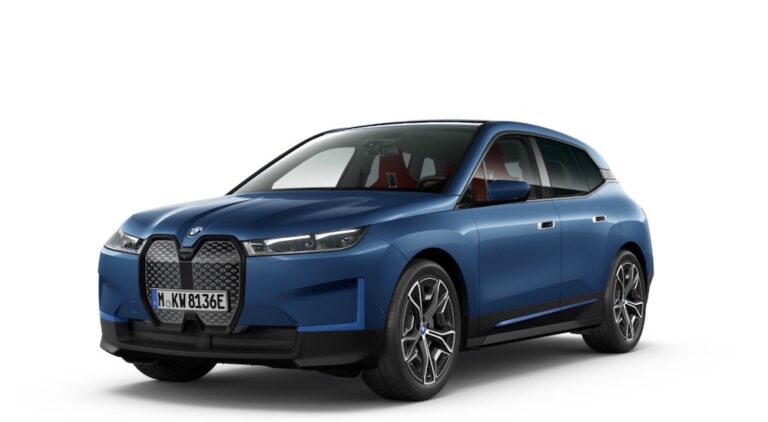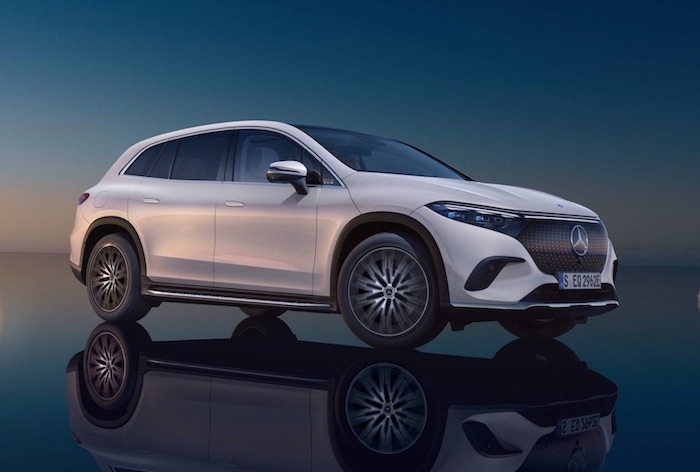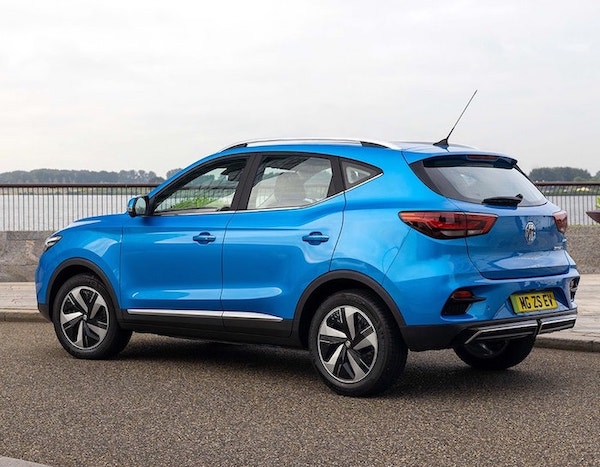Electric Cars: The Basics
For those of you new to zero-emission electric driving, we would recommend a read of the following articles:
Sign up to the e-zoomed Electric Living newsletter
Overview
In both, the UK and globally, Sport Utility Vehicles (SUVs) have gained popularity over the past few years. Also gaining popularity, are the sales of electric cars. Within a short span of time, the market share for electric vehicles (EVs) in the UK, has surpassed 20%. This includes, both, plug-in hybrid electric vehicles (PHEVs) and battery-electric vehicles (BEVs). We can expect this trend to continue unabated, as we approach the ban of the sale of new internal combustion engine (ICE), petrol and diesel cars at the end of this decade!
As automotive manufacturers (OEMs) reposition their product portfolio for the electric driving sector, it is clear that SUVs will continue to remain a ‘core’ product offering. In fact, the migration to electric vehicles (EVs) has further strengthened the enthusiasm for SUVs, given, the practicality and enhanced environmental credentials. Pure electric SUVs have zero-tailpipe emissions, reducing the negative impact of road transportation on local air quality. PHEVs have lower tailpipe emissions compared to conventional petrol and diesel vehicles, and when driven on electric mode, a plug-in hybrid has zero-tailpipe emissions.
Though, both PHEV and BEV SUVs are available, we expect overtime, automotive manufacturers will only focus on pure electric SUVs. Indeed, plug-in hybrid vehicles have been a stepping stone for those yet unfamiliar with EVs. We expect the development of PHEVs to slow further, as automotive companies focus their resources and efforts on BEVs.
This is hardly surprising. The continued significant increase in EV battery size and pure electric range, have strengthened the proposition for pure electric cars. ‘Range anxiety‘, an issue central to the narrative of the early development of the electric vehicle industry, has now been firmly banished to the archives of history.
EV battery technology has improved significantly, such that, delivering an emission-free electric range over 200 miles is fast becoming the norm. Having said that, a number of electric cars now offer a WLTP quoted range over 350 miles. In fact, the all-electric Mercedes-Benz EQS SUV has a 365 miles WLTP e-range. This electric SUV incorporates a 108.4 kWh onboard EV battery. It is also worth noting that in our article on the Longest Range Electric Cars 2023, 50% of the listed EVs were SUVs! In general, given the larger dimensions of an SUV, it offers the opportunity to incorporate a larger onboard EV battery.
Since the introduction of the all-electric Tesla Model X in 2015, we have witnessed a number of mainstream and early-stage manufacturers, introduce pure electric crossovers/ SUVs. Each, keen to offer a ‘unique’ proposition. An example, is the all-electric Fisker Ocean SUV, from the California based new EV entrant, Fisker Inc.
The automotive manufacturer claims its first EV, the Ocean SUV, is the most ‘sustainable SUV on Earth’. The EV incorporates ‘a vegan interior with ethically sourced, upcycled materials throughout’. Of course, offering a cabin interior that is environmentally-friendly is not unique to Fisker. Most automotive manufacturers are keen to stress their ‘environment credentials’ in regards to sourcing and production.
In many ways, the world of the ‘traditional’ SUV is unrecognisable. The latest crop of SUVs, in particular, e-SUVs come in all ‘shapes and sizes’, to cater of an ever growing complex matrix of consumer tastes and needs. The e-SUV segment continues to be ‘stretched’ by automotive manufacturers keen to ride the popularity of SUVs! Do expect this to continue. It is easy to be ‘seduced’ with the latest electric SUVs, but best to be objective in the assessment of which SUV is best for your needs. Below are some helpful tips for buying and owning an electric SUV. You can lease electric SUVs via e-zoomed at fantastic prices.
| Buying An Electric SUV: Top Tips | |
|---|---|
| Price: | The most expensive SUV, is not always the best fit for a buyers needs. Compare e-SUV prices, specifications and features in detail. Ask the question, ‘do I really need this feature?’. In all probability, you don’t! Also, where possible, we encourage leasing an electric car. There are many benefits from leasing, to include, lower up front costs. |
| Vehicle Size: | It is true, in that, a larger vehicle offers more practicality. But, best to place this in context. If you are a small family or an individual, in all probability, you do not need a large-sized electric SUV. Or, if you live in a city, which offers limited parking and congested roads, a smaller-sized SUV will prove more practical. |
| EV Battery Size: | It is a theme that is becoming more common. Automotive manufacturers are keen to offer an electric car with multiple options for the EV battery size (mostly up to 3 sizes). This is an excellent approach, as it gives consumers more flexibility and choice when acquiring an EV, based on their needs and budget. Yes, an EV with a larger battery size will be more expensive. The onboard EV battery is not cheap, and in most cases, contributes to over 50% of the production costs. In our list of the best electric SUVs, the Audi Q8 e-tron, BMW iX SAV, Ford Mustang Mach-E, Hyundai IONIQ 5, MG ZS EV, Nissan Ariya and the Volkswagen ID.4, offer multiple EV battery size options. If the majority of your travel needs are short distances, we encourage choosing a smaller EV battery size. For those occasional long-distance trips you can always rent a car! Of course, if you are commuting long distances on a regular basis, the larger EV battery is a better option! |
| EV Charger: | There has been an increase in the trend for automotive manufacturers to also offer an EV charging station at the time of purchase. We encourage assessing carefully the electric car charging station on offer. In general, all smart EV chargers are not the same. In fact, the difference can be quite substantial. We encourage not being restricted to the EV charging station offered by the manufacturer, but instead, consider leading charging station brands like myenergi zappi, that offer far more than just smart charging. Zappi offers compatibility with on-site renewable energy generation, like solar and wind, for both, residential and business needs. We encourage the use of clean and green energy for charging an electric SUV. This is truly, ‘well-to-wheel’ zero tailpipe emission electric driving. |
| Onboard AC Charger: | Most households in the UK are powered by a single-phase power supply, therefore an EV with a single-phase 7 kW AC onboard charging compatibility is appropriate. Some manufacturers offer an option to upgrade to a 3-phase (11 kW/22 kW) onboard AC charger. We recommend considering this option, as it allows greater flexibility for 3-phase AC charging at the workplace or other public charging stations. |
| All-Wheel Drive (AWD): | Many electric SUVs offer a four-wheel drive variant. Always nice to have the AWD capability, but only if you are really going to use it. If the EV is going to be mostly driven on your local high street and in good weather conditions, it certainly does not require an AWD capability. A four-wheel drive electric SUV is appropriate for those driving regularly in weather conditions that make the road surface slippery i.e. rain, ice, snow etc. For those new to 4WD vehicles, in an all-wheel drive, all four wheels receive power, offering more traction and control. In a two-wheel drive (2WD) vehicle, power is only sent to two wheels i.e. in the front (front-wheel drive) or in the rear (rear-wheel drive). In general, an all-wheel drive e-SUV will consume more electric energy i.e. offer a lower pure electric range compared to a two-wheel drive SUV. In general, an AWD will be more expensive than a 2WD! |
In our assessment, we have considered the overall SUV proposition for the intended target customer group. These include: price, EV battery size, electric range, DC charging capability, onboard AC charger, exterior styling, onboard technology, vehicle efficiency, EV battery warranty, performance and much more! You can read a guide on each of the electric SUVs on the e-zoomed Electric Living Blog.
Best Electric SUVs 2023
Audi Q8 e-tron, BMW iX, Ford Mustang, Hyundai IONIQ 5, Kia EV6, Lotus Eletre, Mercedes-Benz EQS, MG ZS EV, Nissan Ariya, Polestar 3, Subaru Solterra, Tesla Model Y, Toyota bZ4X, VW ID.4, Volvo EX90
Best Electric SUVs
| Brand/ Model | Battery Size (kWh) | Electric Range (WLTP) | 0-62 MPH | EV Battery warranty |
|---|---|---|---|---|
| Audi Q8 e-tron | 95 kWh/ 114 kWh | 256 – 333 miles | 5.6 seconds | 8 years or 100,000 miles |
| BMW iX SAV | 76.6 kWh/ 111.5 kWh | 247 – 369 miles | 4.6 seconds | 8 years or 100,000 miles |
| Ford Mustang Mach-E | 75 kWh/ 98 kWh | 248 – 379 miles | 6.9 seconds | 8 years or 100,000 miles |
| Hyundai IONIQ 5 | 58 kWh/ 77 kWh | 238 – 315 miles | 5.1 seconds | 8 years or 100,000 miles |
| Kia EV6 | 77.4 kWh | 328 miles | 5.2 seconds | 7 years or 100,000 miles |
| Lotus Eletre | 112 kWh | 304 – 373 miles | 2.95 seconds | N/A |
| Mercedes-Benz EQS | 108.4 kWh | 362 – 365 miles | 4.6 seconds | 10 years or 155,000 miles |
| MG ZS EV | 51.1 kWh/ 72.6 kWh | 198 – 273 miles | 8.2 seconds | 7 years or 80,000 miles |
| Nissan Ariya | 63 kWh/ 87 kWh | 247 – 329 miles | 5.7 seconds | 8 years or 100,000 miles |
| Polestar 3 | 111 kWh | 347 – 379 miles | 4.6 seconds | 8 years or 100,000 miles |
| Subaru Solterra | 71.4 kWh | 257 – 289 miles | 6.9 seconds | 8 years or 100,000 miles |
| Tesla Model Y | 75 kWh | 283 – 331 miles | 3.5 seconds | 8 years or 100,000 miles |
| Toyota bZ4X | 71.4 kWh | 286 – 317 miles | 6.9 seconds | 10 years or 100,000 miles |
| Volkswagen ID.4 | 52 kWh/ 77 kWh | 221 – 329 miles | 6.9 seconds | 8 years or 100,000 miles |
| Volvo EX90 | 111 kWh | 363 miles | 4.7 seconds | 8 years or 100,000 miles |
While e-zoomed uses reasonable efforts to provide accurate and up-to-date information, some of the information provided is gathered from third parties and has not been independently verified by e-zoomed. While the information from the third party sources is believed to be reliable, no warranty, express or implied, is made by e-zoomed regarding the accuracy, adequacy, completeness, legality, reliability or usefulness of any information. This disclaimer applies to both isolated and aggregate uses of this information.


























































